Watch the live presentation below
Transcription (was completed by automated process. Please ignore any speech-to-text errors)
Speaker1: [00:00:01.32] Well, hey there, this is Beatty Carmichael, and welcome back to another session of Get Sellers Calling You. This is a special podcast. And for those who are listening to our podcast, I’d like to encourage you if you get a chance to go to our website at Gensler’s, calling you dot com and actually watch it. Or you can go to our YouTube channel as well. They I’m going to be showing you on this podcast actual examples of things we’ve done in postcard marketing that drive results in. And I’ll do my best to describe it audibly in case if you’re listening right now and you just want to go and listen to it, you’ll get a lot out of it. But there will be some graphics and things that we’re showing that I think you would enjoy being able to say. So this is a continuation of the same podcast by the same name from the previous session. We broke it in about twenty five thirty minutes on the first session. We’re doing the remaining session here and this podcast kind of assumes that you have gone to and watched the other one. OK, so what we’re doing is we’re discussing those things that we’ve learned over time that drive results and for our clients in terms of getting new listings, so much so that we’re able to for many of our services, actually guarantee the number of listings you get from it or give your money back, which is unheard of, and the real estate world.
Speaker2: [00:01:37.81] But once you’ve got a pattern down, then the pattern always works. What we discussed last time was some of the results that I accomplished through doing different split marketing tests. So I did. Twenty one split marketing tests and tests at another thirty seven message variations over about a two million postcard run, identifying what causes the homeowner who’s thinking about selling to actually respond. OK, how do they respond? So this is we talked about Font’s, we talked about headlines and types of messages and offers and design layout and different things. Today is the continuation of that. And today we’re going to be talking about why they respond, which is a totally different topic all its own. But once you find once you understand how homeowners respond and then why they respond, you put them together, you’ve got gold and it really, really works. So let me encourage you to go through this, if you can, to watch it. Also make sure that if you like this content, make sure you subscribe to our YouTube channel or to our podcast channel. OK, so if you’re a YouTube or subscribe, if you’re just an audible listener, you listen audibly. Then if you have Apple subscribe on your Apple podcast or if you’re on Android subscribe or whatever player you use. And then that way you’ll be sure to get a all the distance as we come out with them. Thanks for watching. I think you’re going to have a great time with this and this really opens up a lot of cool stuff.
Speaker1: [00:03:11.65] Why homeowners respond to that first thing was how homeowners respond. The second thing I want to do is I want to talk about why they respond and this is a little bit different. Let me take some water. Sorry about that. OK, so why do homeowners respond is real interesting and homeowners respond because of a thing called trust. OK, now most people think trust is easy to understand. Oh, they trust you. They know you, therefore they trust you. That’s not it at all by a long shot. Now, that’s part of it. That’s a significant part. But in terms of the trust I’m talking about, it’s totally different. So trust you can actually break into three different components. OK, and the first component is your sales. Do they trust that you’re constantly selling homes? And the way we came about, this is when we first started. The only thing we did was geographic farming for our clients and mailing postcards into geographic farm. And so we would always ask our clients when they were signing up with us. Have you ever done geographic farming before? Most of them said no and some said yes. Those who said yes, we said, were you successful? Most said no and some said yes. And so then we would ask a final question for those who said yes, what were you doing? What did you do? And this is something real interesting. Any time you do a marketing test and 100 percent of your results is always the same, then, you know, you hit go OK.
Speaker1: [00:04:49.02] And that was the case with this. One hundred percent of those agents said I was sending out Jessell postcards. And so that started to help us understand. The most critical part of trust is that these agents need to see that you’re always selling. Let me give you a real quick idea. So I’m going to sell my house. I’m not a real estate agent and I have two friends who are real estate agents. I know they’re selling that. There are agents. One of those friends I keep getting a Jessell postcard every three or four weeks for the last two or three years. Another sale, another sell, another sell, another sell. And my other friend, I know he’s been selling real estate for 20 years. I know he’s probably successful, but I never see any sales. Which agent am I more likely to call the one I keep selling saying all the sells about because it’s a safe bet. OK, that’s the first element of trust. It’s a safe bet that you’re consistently selling homes, but then it goes a little bit deeper. The second element of trust is that they need to know your they need to trust that you have the expertize to get them the most money, because what a homeowner really want, you can boil it all down to three things.
Speaker1: [00:06:00.51] If you can validate in their mind that you can establish these three criteria for them, they will choose you every single time. Can you sell my home for more money in less time and with less effort? And I’ve even seen this happen when they’ll in fact, I’ve got to tell you a story. So one of our clients, his name is Roman. He’s down in South Florida. He’s marketing to this gated community, average sales price. Eight hundred thousand dollars, OK? And in one of the homes comes on the market. One of the homeowners chooses a friend of hers who’s an agent in that community, who lives in that community to list their home. But they’re both getting Romanes postcards. And we created the postcards, OK, using all this stuff. And and so they both decided that it would be in the homeowner’s best interest to let Ramon sell the house instead of that agent. So the agent actually gave her listing to Ramon and and add Ramon sell it because of the marketing content in the postcards that that got both of them believing that he had greater expertize. OK, so once they know your expertize, they’re more likely to do business with you and the way that they you teach them your expertize is you help them understand your inside reality. What your inside secrets. I’m going to show that to you in a moment. And then the third element of trust, and this is also very significant trust is do they know you personally? Had they met you? This is why if you’ve ever read the book, The Millionaire Real Estate Agent, they did a they survey thousands of agents all across the country.
Speaker1: [00:07:39.60] And one of the questions that they want to understand is what type of leads were most effective? And they made this comment. This is in chapters two and three, if I recall correctly. And the comment was when we looked at all of the leads, all of the different types, we could we basically both of down into two types if you’ve ever met them or you haven’t met them. And and so the Met is an element of trust because once they’ve met you as a person, then they trust you a lot more because you’re a real person behind the deal, behind the scenes. In fact, one of the stories I got to share, how we came across the same thing. So, by the way, here’s what we find is once they met you, they’re typically about eight to ten times more likely to do business with you. This is. Real important if you’re going to be doing something with a cold market, geographic farming, maybe probate or pre foreclosures or what is it expired listings, anything like that, OK, where they really haven’t met you. And so if if they can meet you by in person, you’re like a Dornoch face to face.
Speaker1: [00:08:45.04] That’s best. If they can’t meet you in person, then second best is a video where they can actually like you. If you’re watching this video, you see me, you’re seeing me talking. You see my body language, you see what I look like. And and so it creates an element of trust. So one of the things we did is as we were generating several leads for our clients and our early stages of just geographic farming, we noticed that some of our clients were averaging about 10 percent of the sellers that went on the market. They actually won the listing and other clients were averaging 90 to 100 percent of the sellers that went on the market. They’d actually get the listing. So that’s a nine to ten times increase in results. So as the marketer that I am, I started calling people up and saying, hey, what are you doing? And trying to discern what is the difference between these two groups. One of the only main difference, the group that was getting 90 to 100 percent, they’re actually doorknocking and saying hello and meeting them in person. And it shows you that if they can meet you in person, your trust level goes sky high and they’re more likely to do business with you. So then in marketing, there’s another concept that ties into this. And I want to walk you through this. It’s called outside perception versus inside reality.
Speaker1: [00:09:59.22] And what this is, is that the outside perception from the consumer? OK, so this is the homeowner, that investment property owner. If you’re in the commercial side, that property on the outside perception is all agents are the same. All you they’re going to do is stick a sign in the yard, list my home in the MLS and just sit back and wait for another agent to bring a buyer. OK, so the implication of that is if all agents are the same, then it really doesn’t matter which agent I choose to sell my home. I’m going to get the same price in the same amount of time. So this goes back to positioning. This is the open door to positioning, because now if that if you understand this, then you can understand how to get your brand at the top of those homeowners minds so that they position you first on the list. And that is this assume for a moment that all of those property owners understood your skill, your expertize, your experience, your years, all the training that you’ve gone through and everything else. Assume that they understood all that to the same degree that you understand it about yourself. If that’s the case, would they choose any other agent besides you realistically? Now, if you’re a brand new agent, you might be saying yes, but if you’re an experienced agent and you got a good track record and you know truly how good you are, then the answer is no.
Speaker1: [00:11:19.71] If they understood your inside reality, then they would choose you every time. So the real key with this whole concept of positioning and this whole key with trust is to help them understand your inside reality, because here’s the key. When homeowners are ready to call an agent. Bottom line is they’re going to call an agent that they trust the most, OK, the majority of them right there in the dead center, the ones that are going to trust the most, including like my friend Roman, they gave up the listing to let another agent that they trusted more to sell the house. OK, so now when you apply all of this, how homeowners respond with, oh, I’ve got to move back one more step. You remember the last slide I did on split marketing test where the east and the south and the east was eight hundred percent more than the West? OK, in terms of results, it had to do with trust. People are more trusting naturally in the south and the east than they are out west, but the element is the same once we enter. In fact, I got to tell you one more story, because this is a perfect example. So we’re dealing with two agents in the same office in San Diego. One agent had been sending out just postcards every month for two years, and they’re just postcards.
Speaker1: [00:12:37.46] Had a unique flavor saw like this one does. You know, it had a design element that was very unique to them. The other agent in that office was targeting another subdivision literally next door, demographically, identically the same, but he never marketed there before. So then we go out with our marketing, which is identifying sellers. That was what we were doing back then entirely. And the agent that marketed to an area where they’d already been there for two years with Jessell postcards, we had the highest results of the highest results we had with any of our clients anywhere in the nation. The other agent got zero results and we started to see this in pockets everywhere across the West. When you had an agent that had already built up trust, then homeowners were free to respond. In the South, most people trust their trust. Trust level is a lot higher right off the bat, so it’s just easier there. But it’s all based on this trust. OK, so then how do you apply this when you apply how the homeowners respond, which is what we did in our split marketing test with why they respond, which is all about the trust. That’s when you start getting sellers calling you, especially with postcard marketing, which is the primary way to do this. So I want to talk about how to apply these secrets and what we learn.
Speaker1: [00:13:57.29] I want to show you some examples of how you can actually start doing this on your own. It’s really easy. And then obviously, if you want to hire us to do it for you, we’d love to do that. But I want to walk you through a client of ours. His name is Josh. He’s actually here in town. And I want to show you how approach how effective this approach really is. So at the time, Josh was marketing to a twelve hundred home farm for 12 months, he had no results. And then he called me up and he said, hey, I know that this will work, but can you any ideas on suggestions to help? And said, yes, it was at this time that we were just moving into this outside perception versus inside reality approach. And so we began implementing this whole approach of building trust. And in the first seven months, he closed eight sales from the previous year where he had nothing. OK, and starting by month number eight, he was getting two new listings every single week. Half of them were calling him up and saying, Josh, I’m thinking about selling. Can you come talk to me and watch this? The other half were calling him up and saying, Josh, my home is on. The market is not selling. As soon as my contract expires, will you come sell it for me when you can get homeowners who are under contract to believe that you can do a better job simply because the content that you’re putting out, that they actually call you up and say, well, you can sell it as soon as my contract expires, then you’ve done a great job in that whole positioning.
Speaker1: [00:15:24.53] OK, and so that’s what we did. And this works for any type of list, whether it’s a geographic farm, a personal database, your past clients sphere of influence, whether it’s a commercial side of things and your investment properties selling to prime property investors and things of that sort, because they all focus on the same thing. That same person, that person who’s in your personal database is the same person that’s in someone else’s geographic farm who happens to be the same person who might own some investment property. So that’s why all of this is interchangeable. So let me show you this. For those of you who are listening, this is where you would really need to see the video, OK, because I’m now showing you actual examples. So let’s let’s look at this first from the standpoint of a Jessell postcard. So this is a typical Jessell postcard that a real estate agent would send out. So I’m a homeowner and I get this postcard. And what does this tell me? Hey, great. Bill sold another postcard. I probably maybe even recognize the House from the photo. And and it makes an impression.
Speaker1: [00:16:31.04] But watch what happens by just changing a few words. This is what I want to show you. It’s not making a dramatic change that increases results dramatically. It’s making just little changes. Watch this. I’m going to add one statement to this postcard. I did it again. Another one sold at the top of the market price. Now, when I get this postcard, what this tells me is a couple of things, wow, Bill did it again. Bill is constantly selling. Why do I think that? Because he said it. I did it again. Another one sold. So this reemphasizes. He’s constantly selling. But then watch the other statement at the top of the market price. Isn’t that what I want for my home? Now, here’s the beauty of this. Watch this. This home could have sold could have started at one price drop the price three or four times, taken six months to sell and finally sold. But it’s a true statement is still the top of the market price for that home in that market at that time. OK, and so you can always say something great about the sale that creates the perception and those in the consumer’s mind that you did really something really, really great. OK, because until they become a past client, when they choose you for the first time, they’re choosing you on perception. But watch this. Let’s say that this home had actually been on the market for with another agent and just didn’t sell.
Speaker1: [00:17:57.76] OK, so like my friend Josh, my home, I’m under contract is not selling will. You can sell it. So watch this. I want to change the statement and it’s going to dramatically impress you with how amazing Bill Smith is. So now the the statement on the card is this home had been on the market 180 days with another agent without selling elicited at the same price and sold it in only five days for full price. Isn’t that amazing, man? I’m going. Wow. Bill must be a real expert instantly. That positioning a bill in my mind is all all the way at the top of the list, because simply by adding a few words, I now understand that this was an amazing sale. And therefore, Bill must be an amazing agent. He must really know something about selling homes that other agents don’t. And therefore, if I’m going to sell my home, I don’t want to risk it with an agent who can’t sell the home. OK, so this is what’s going on in my mind as a consumer. But then watch this. We can take this a step further. This is the same home, but now we’re going to add a little bit more content to change and increase the perception that Bill is a superstar. OK, so we use the same message up here on the top left. This is what we call the caption for the photo.
Speaker1: [00:19:18.39] So, by the way, the way this this card is designed is really interesting. When someone looks on this side, their eyeball always goes first to the photo and then to this section right here. We call it the subhead. And so we’re going to put a statement you’ll see on these cards. They always have a statement that we want to impress in the owner’s mind. Why do Bill Smithson’s homes sell faster and get more money? And that that’s Bill’s case. So. With that and by the way, what you see on these postcards, these are what we call our premium cards, this is where we actually will interview Bill. We give information to a professional copywriter. And so we create really custom cards specifically around Bill and his inside reality. And so that’s what you’re saying on these. But let me show you what we did on this. So now let’s start first with the caption, the message about the cell. Bill Smithson did it again, this home had been on the market one hundred and eighty days with another agent without selling with aggressive marketing, Bill listed it at the same price and sold it in five days for full price. So now we add a little bit more things like aggressive marketing. OK, the other thing you’re going to notice is we when we do this, we use the third person, because what we want to do is we want to position the name Bill Smith.
Speaker1: [00:20:33.16] And in the mind and if it’s always I did this, I did that, you kind of lose the name. So you’ll see that we put Bill Smith center out, Bill Smith, Bill Smith and Bill listed Bill Smith. OK, that’s all on just this one page. So then watch what we did here, though. Now all of this is going to increase trust because that in trust increases positioning and the higher the positioning, the increased likelihood, Bill is going to get the phone call. OK, so why did Bill Smithson’s home sell faster and get more money is because of his four secrets of selling homes. No. One is preparation. He helps coordinate painters and handyman to make a great first impression. Second is pricing. He knows a limit to push the listing price without exiting the market. Third is presentation. 95 percent of buyers start their search online. He uses professional online marketing that gets the best buyers attention. And third is promotion. He aggressively market your home using a proven twenty one step marketing strategy that finds more buyers and sells it faster. OK, now I know what’s going on in most people’s most agents minds right now because I’ve heard it from your mouth. Oh, that’s too much, Mark. Too much coffee. No one’s going to read that. So let me tell you another story, we open up a farm for my friend that I mentioned earlier named Stewart.
Speaker1: [00:21:53.42] It’s a there are two dominant agents who’ve kind of controlled the market for the previous eight and 10 years combined. They do about 20 to 22 percent of all the sales in that area. And it’s a thousand home community. And so we go in there with this type of marketing. And in seven months, he gets 14 listings listing appointments. By the end of the first year, he’s the number one selling agent and he maintains that status for the next seven years. Which brings us to today, totally ticked off those other two agents because he came from nowhere and outperformed them. So they homeowners actually do read this much copy. OK, here’s another thing. So let me show you this one. So this is another another one of those accidental tests. I’m talking to one of our clients named Zach, and this was in late October. We’ve been doing geographic farming postcard mailing for him for several years in this farm. And on the conversation, Zach says, hey, can we send that same postcard that you sent out in January? I said, sure, but why? He said it produced half of all the listings I’ve gotten this year. So think about this, a postcard in January, which is not the time most people sell produce half of all the listings he had that entire year. So what do I do? I go up and I pull out his card and say, what’s the difference on this postcard? You know what the difference was? It had a family photo on it.
Speaker1: [00:23:22.37] That’s it. Everything else was essentially the same. And it hit me. If you go back to what generates trust and trust is that they match you well in a geographic form. They never met you. All they say is your professional photo. Once they saw that he was a real person with a real family, instantly it broke through that barrier and they started to trust him. We then started to test that with other agents of ours and we started to see the same results. When we would send out a personal photo, we would see an increase in responses because now those homeowners say, oh, you know, you look at this photo like right here, you know, anyone with a family that’s a good looking family like that, they definitely look trustworthy. So you do a family photo in a casual setting that’s not professional and it really just kind of brings some realism to you. OK, and then so what we do on something like that is we’ll put a little caption, my wife and I love to travel with the kids here. We are enjoying hiking and having a great time as a family, something that’s just all family oriented. But then watch what we did on this postcard. OK, keep in mind, the eyeball goes to the photo and then to the subhead.
Speaker1: [00:24:27.14] So we on this one, we emblazon something else. Bill Smith, and there’s the name again, Bill Smith. Centocelle Eighteen days faster than home sold by other agents. Here’s why. OK, well, that’s impressive. Eighteen days faster. So now you got my interest, especially if I’m thinking about selling. So then this is what our computer writers wrote for Bill. Some agents are top performers. Many are not Bill and is a top performer. According to the MLS, built homes sell eighteen days faster than home sold by the typical agent. Why? One reason is he has over 97 buyers who want to purchase a home right now. As soon as he lyssa home, he has buyers who want it. That means his home sell faster. OK, so what happens then is, is as homeowners are thinking about selling because most home owners plan to sell two or three months at least before they actually put their home on the market, they start to hold onto these postcards because this is information they don’t want to forget. Let me show you another way to to show your expertize, create trust, show off your sales and and basically tell homeowners why they should choose you, choose you. So this is for the left right homeowners, which is, what, about a third or fourth of the people out there? So you want to include them in this, too.
Speaker1: [00:25:40.49] So you have Bill Smithson and then the headline, Bill Smithson’s Homes Get More Money and sell faster. And then the next headline, Why choose Bill Simpson? Can you tell? We’re using his name a lot because his homes get more money and sell faster and now we validate it statistically with MLS. OK, so for an average sell the Eversole price for a home LYCETT at three hundred thousand dollars. So this is going out to a community where the typical price is around the three hundred thousand dollar mark. If this was going to a community at a quarter million or at five hundred thousand, all these numbers would be adjusted based on that. So then we say the market average. Now, this is using the list to sales price ratio, the market average for home listed at three hundred thousand. The market average sells it for two hundred ninety one thousand three hundred. Bill Smithson’s average is two hundred ninety seven thousand six hundred, which is sixty three hundred dollars more money. In other words, we are now quantifying exactly how much more money he gets. OK, statistically. And then how about average, say, a market? The market averages forty three days, Bill Smithson’s averages twenty five days, which is 18 days faster. So now we have just proven his homes sell faster and get more money. OK, so that’s another way to do that. So now let me show you one last thing.
Speaker1: [00:27:00.65] This is how do you supercharge results? This is actually what we came out the chute in 2012, 2013. Some of the stories I’ve shared. This is how they’re generating clients real quickly. And then we added the trust level, and that is how do you identify sellers before they go on the market so you can get to them first? So here’s what really goes on. If you think about this in terms of getting listings, there are two ways to get listings. You can wait for them to call you. Or if you know who they are, you can call them first. I’ve always found that if you know who the interested prospect is and you’re proactive to call them first, you’re more likely to get the deal because you know that you will actually pick up the phone and call them. But for them to pick up the phone and call you, they have to discern you above everyone else and then think about it. So while the building, the trust and all these things will definitely persuade them, I mean, most of the stories I’ve shared, most of that increase in results was that persuasion. There’s still a lot to be had by identifying sellers. Let me show you how this happens. So on the address side of the postcard, what we started to do is put a message on the left hand side that a seller would be interested in knowing about it.
Speaker1: [00:28:14.70] They’re thinking about selling like in this one. Here’s the headline. This is a great headline to grab attention. OK, if you’re thinking about selling your home in the next six months, read this immediately. By the way, this is our second top producing seller ID offer. There’s one more that produces even better results. I won’t share that with you here, but this is the second second best one. And what it does is it gives them some information and some in tantalizes them to want to then go to the website or scan the code and learn more. So what we’re doing is we’re getting them to simply go to a Web site. And what happens is that website that they go to, the U. RL that we send them to is totally unique to them, meaning if we’re sending out a hundred thousand postcards, we’re sending out 100000 new URLs and 100000 different QR codes. So the way it works is when a prospect’s prospect visits that you. Well, we match that you URL specific to the prospect to the homeowner that we mailed it to. So now we know instantly exactly who they are. They don’t even know that we’ve tracked them. We call the stealth tracker, OK, and then we drop them onto the Web site. It’s a landing page that we designed for you that has the information that they’re looking for. And then we instantly email you who they are so you can immediately follow up.
Speaker1: [00:29:35.46] OK, and this is when now that you know who’s thinking about selling, if you can engage with them, one of our clients have. OK, so now not everyone who goes there, you are actually planning to sell. It may be a year or two out. They may just be curious. But here’s statistically I was asking one of our clients and he made a list of all the people who click through and he’s listed half of all their homes, OK? And that simply by picking up the phone and calling them, he doesn’t even go Dornoch. So what’s happening then is as they respond to that postcard and going to the website, you’re now able to pick up the phone and actually start to call them back and be proactive. So let me show you one last thing. This is kind of the unabashed plug for what we do in services in case this holds interest. You don’t want to know. A lot of people say, I don’t want to make the baby. You know, I don’t want to go through childbirth. I just want the baby, OK? And so if you just want the baby, you want someone else to do all the work for you, then let me encourage you to visit our site at Agent A.M.. But we have several things. Let me show you a couple of really unique things.
Speaker1: [00:30:39.48] One of the things is circle marketing. This is now we’ve all been told when you make a sale, send a postcard out and you’ll pick up another listing typically. And most of you guys probably try that and it didn’t really work. OK, the reason I know it doesn’t work is their homes are being sold all around my house and I almost never get a postcard. If it was consistent, people would be doing it all the time. It’s not consistent for a simple reason. They don’t understand how to do it right. So what we did was circle marketing. We we started to implement all these things that we’ve done for our clients for years. It’s totally automated, which means you make a sale, you simply email us. Here’s a photo. Here’s the address. Send out one hundred postcards to the closest hundred homes, OK? And we’ll actually do it all for you and send it out. So it’s a done for you and we actually guarantee you listings or one hundred percent of your money back. So you can see a little video on that on a site if you want turbo go farming. This is where you can take a geographic farm and start to dominate it. We actually guarantee your listings and that as well. Or your money back is using everything I’ve shown you here, plus a little bit more there. Some other technologies that we use that keep you constantly top of mind.
Speaker1: [00:31:53.67] That’s not just postcards. We we actually do use digital marketing in conjunction with everything, but we use it for in a different way than most people. Turbow referrals. This is where we help you focus on your personal contacts. This is actually the number one highest producing list you can ever go to your past clients in your sphere of influence. And if you stay close to them, you will drive business. But most people don’t. Let me give you statistically, these are not just pulling out numbers statistically based on large group studies that have been done when marketed to properly. That personal database of yours should be producing seventeen sales every year for every 100 people on your list. That’s what’s going on. So if you know a hundred people, a mixture of past clients and sphere of influence and you look at how many sales you got from that list and you got three sales last year from it, you’re losing 14 sales a year statistically. OK, that’s the magnitude of the increase that you can get. Simply by doing it right and doing it right is what we do with turbo referrals. This is where we bring another piece of new technology that we’ve created. I haven’t shown you. It’s not a postcard. That’s why I’m not showing you on this thing. But by implementing all of this, we actually start to guarantee you those numbers or obviously your money back.
Speaker1: [00:33:16.20] And then on the commercial dominator, this is if you are in the commercial sector with investment property, multifamily, small retail, small, little shopping centers, those type of properties that are typically owned by an individual, not by some big corporation. Those individuals make buying decisions as a home consumer, homeowner, consumer. And so we have a process there and also we guarantee those results. So let me encourage you. I’m going to in fact, I want to share there was a couple of questions people asked on this. And I want to pull those up real quick because I thought this was real insightful and will also help because these may be on the same type of questions that might be going on out there. Again, let me just remind you to subscribe to our podcast to get more of this type of stuff, if you like this. So I was doing a call like this recently, and these are some the questions and I thought they were just really good questions. No. One is what type of budget do you need to put towards this? The simple answer is the budget that you put towards this is the budget that you can easily and comfortably afford. OK, there’s no reason to go out and and, you know, mortgage your home to market with this type of stuff. You know, there are people with a budget of two hundred a month.
Speaker1: [00:34:32.49] We got clients with budgets of two and three thousand dollars a month. You know, it is what it is, but it’s all proportional. OK, that’s the main thing. The most important thing is to do something, have a budget, structure it, you know, make it a part of your business plan and then execute on it. So if you’re going to do anything, especially with postcard market, because it is more expensive than other marketing. But keep in mind the results like what Gary Helbert found twenty times the number of sales, then doing something by email. OK, then the results are there. The thing you want to do is take a budget. I typically tell people budget, something that you can comfortably handle for six months without making a sale, without making a transaction from that, because it may take that long to get a transaction out of it. OK, if you do it right, you should get a lot shorter. The other thing, we have a lot of clients that have generated six figure incomes from their very first year and doing postcard marketing like my friend Stuart. A lot of those stories have told you in the past with some others. And there’s one thing that they all have in common, and that is they targeted enough homes, typically about the nine hundred to a thousand homes in like geographic farming is if you’re just getting started, that’s kind of what it takes to get a six figure income your first year.
Speaker1: [00:35:50.43] So that takes a little bit larger budget. OK, so if you have the budget to do something like that, then basically what this means is this. The more homes you target, the faster you’re going to get a sale that’s going to fund for every find everything else. So sometimes the key is maybe to get it cash flowing quicker than not. And so you go with go after more homes. The, by the way, six figure income. We have other people generating six figures on much smaller lists, especially at their personal data base lists. Then someone else has. How frequently should you be mailing these postcards? And that really depends on kind of what you’re doing. OK, so let’s say it’s your personal contacts, your past clients, your sphere of influence, and you’ve been in touch with them, not through automatic email. OK, most people rely on that because it’s cheap and it’s easy, but it’s maybe not all that effective. But if you’ve been actively engaging with your past clients and and sphere of influence, you’re meeting with them. You’re calling them periodically throughout the year, then maybe one mailing a month is all it takes. If you really haven’t worked your past clients and sphere of influence, I’d probably do a mailing every three weeks. OK, now, if you’re doing geographic farming and you’re just opening up a farm, you got the budget.
Speaker1: [00:37:06.57] I highly recommend for probably the first three or four, maybe even five months, do two mailings a month every two weeks so that you can kind of saturate your brand, saturate in their mind who you are, start to educate them. That gets your your your brand positioning quicker because you have to fight through a lot of garbage of they’ve never seen you before. But once you get it started, then you can pull back to about every three weeks. If it’s if you’ve been there a while, you can pull back every four weeks. OK, let’s say circle marketing. You know, just so that’s a one time mailing. So that’s easy. Another question was asked is, what if you don’t have many sales? OK, and the root of that question is, if I’m going to start marketing to my list or a geo farm or something like that, I just don’t have enough sales. Maybe I do five sales a year. What do I do? Well, you refurbish those sales. You you reposition them essentially so you can take a sale that you made four months ago and send it back out again if you need to. OK, you can take a cell from last year because all these aren’t just sold. If you’re if you’re struggling on sales, these are sold as opposed to just sold. OK, and and what’s great with that is you don’t have to show the front of the house.
Speaker1: [00:38:28.17] Maybe someone realizes that that house. So they remember it because it’s in their neighborhood a year ago. But you can show an internal photo like the den or the master bedroom or the kitchen. And now they have no reference point to point it to. And you can just put the street name you like, like West West Elm Street as opposed to the actual street number. OK, so now that kind of it’s full disclosure, but they don’t really connect the dots. And this is a home that sold six months ago or eight months ago. And because of that, you can then get very consistent because the consistency in your mailing is real important. You can get very consistent in and dropping another postcard in the mail every few weeks or even just once a month. And it’s always another sell. Let’s say a couple other questions. Uh, what if you’re a new agent or a buyer’s agent? OK, well, same thing. These don’t have to be seller site sales. If you’re a buyer’s agent, you can still use it. My personal recommendation this has not tested. This is just kind of gut feel from doing years of marketing. My personal recommendation is don’t be saying I was the buyer’s agent on this home, because if I’m wanting to sell my home, I’m looking for someone who’s good at selling a home and not helping out buyer purchase a home.
Speaker1: [00:39:52.65] It may not be a big distinguishing factor, but keep in mind the mindset of the seller. Who do I choose to sell my home? They are going to be more likely to choose someone that they’re perceiving as listing and selling homes so you can use or sell simply by saying another one sold only 14 days on the market, which is all true. OK, just let the buyer representation side out. If you’re comfortable doing. If you’re not comfortable, then put it, you know, by all means, put it there, you know, another one sold, sold quickly. My aggressive marketing sell this home after only three days on the market because you’re aggressive marketing is getting your buyer there fast. OK, so you can do things like that and make it really easy. Let’s say other things. If like you’re going to do go farming, you don’t have many sellers, that’s one way to starting starting to do it. There are also some great content cards that we can help you create, but we’ve actually created that or kind of generic in nature, really geared for that beginner agent to kind of get their foothold and doing stuff. So you can do that also. But anyway, bottom line is, don’t be afraid of doing any of this simply because you don’t think you have enough sales or you don’t have enough good sales. The key is get started where you are and then as things improve, you can always improve the marketing.
Speaker1: [00:41:08.58] So anyway, I hope this helps. If you have questions, just go to our website. Agent Dominator Dotcom. You’ll see a form you can fill out. We can reach out to you if you love this type of marketing again, please subscribe. Get Sellers calling you and we’ve got a great website and get sellers calling you dotcom. Lot of free content on almost anything you ever want to know about just sold marketing, personal database marketing, geographic marketing and just marketing truisms as a whole. So thanks for allowing me to share this and I hope you have a very blessed day. If you’ve enjoyed this podcast, be sure to subscribe to it so you never miss another episode and place like our guests, Heather is calling you Facebook page. Also, if you want to increase sales from past clients and sphere of influence, dominate a geographic farm or convert home valuation leads. Check out our agent, dominate our program. We create custom content that differentiate from other realtors, then use it to keep you top of mind with your prospects, with postcards, targeted Facebook ads, email campaigns, video interviews and more. And the best part is we guarantee yourselves or give all your money back. Learn more and get sellers calling you Dotcom and select Agent Dominator in the menu. Thanks for listening to the sellers calling you podcast. Have a great day.
P087

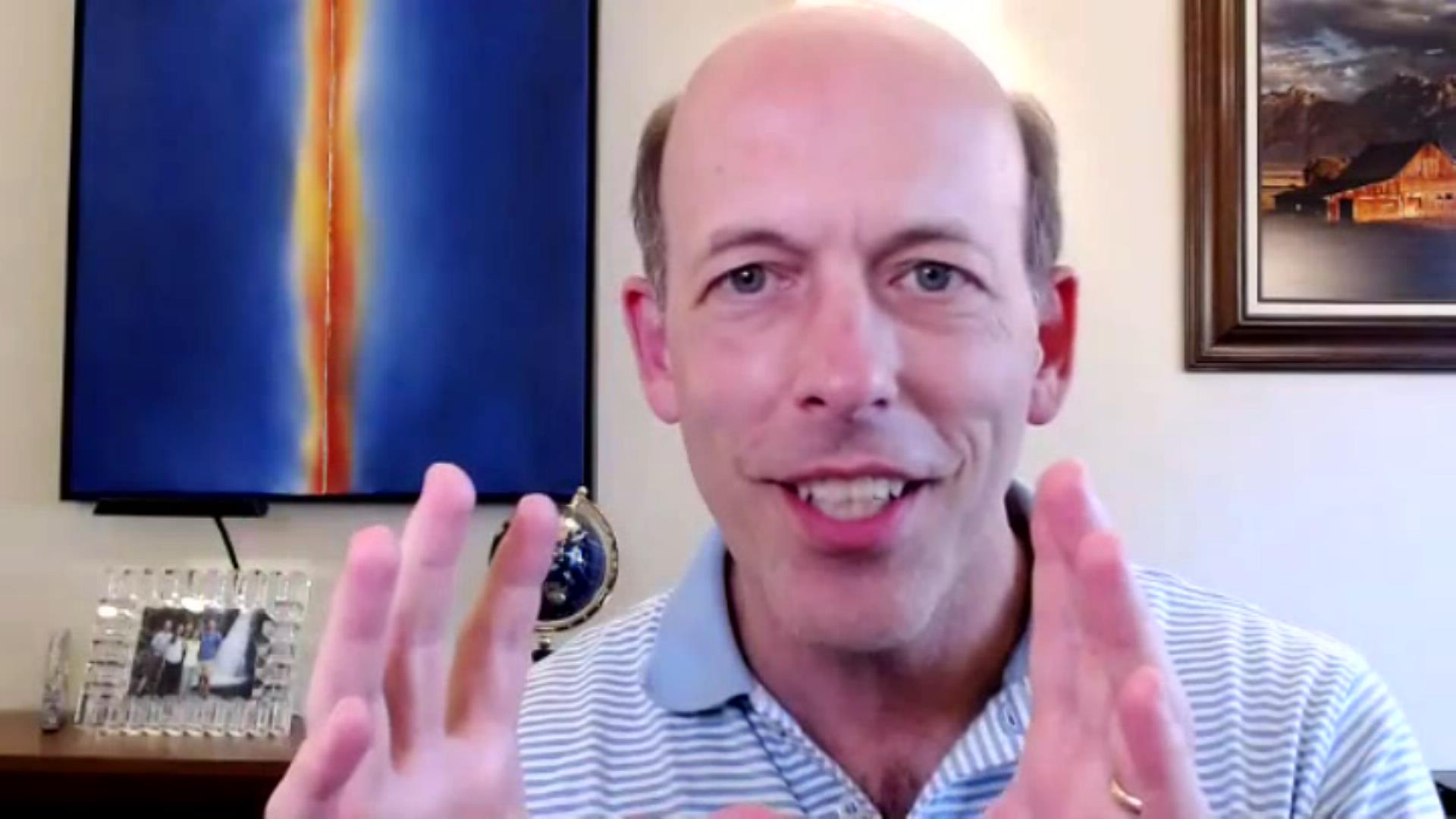
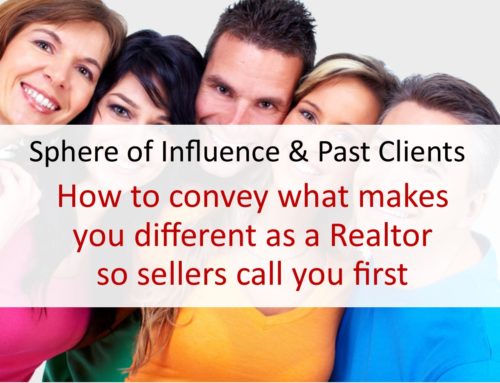
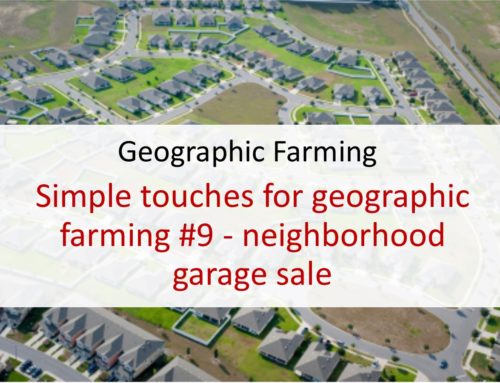
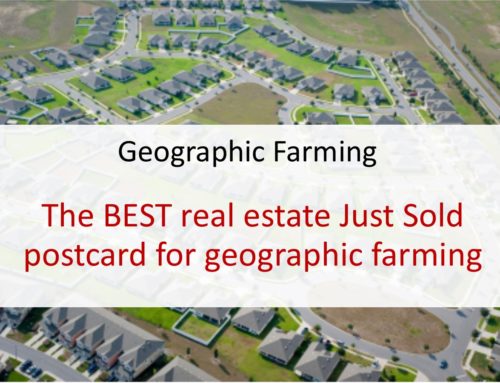
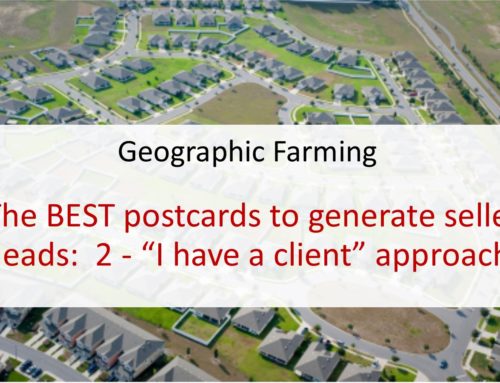
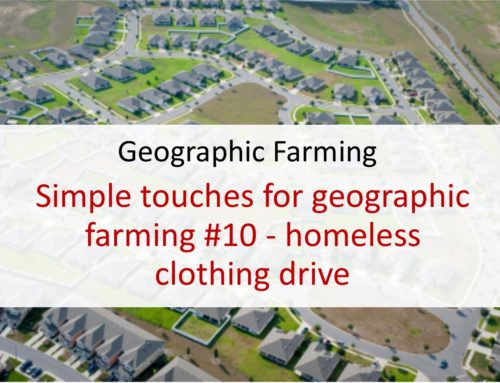

Leave A Comment